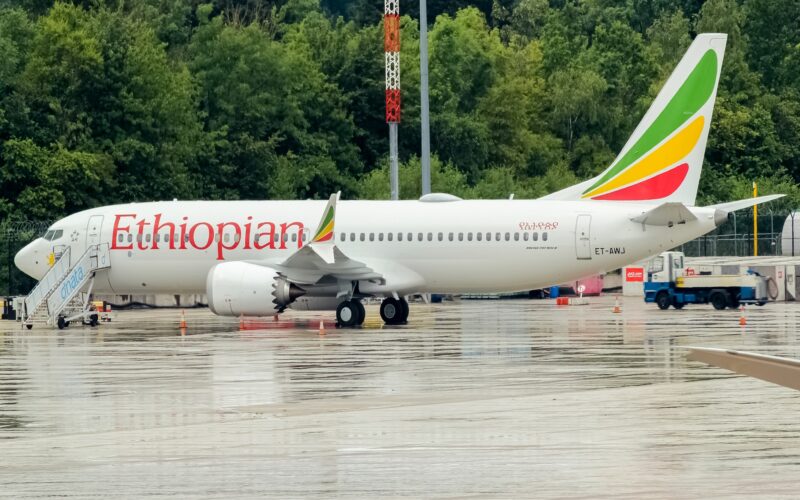The US National Transportation Safety Board (NTSB) published a second set of comments, pointing out further flaws with the Ethiopian Aircraft Accident Investigation Bureau’s (AIB) final report on the 2019 crash of an Ethiopian Airlines Boeing 737 MAX that was published in December 2022.
Initially, the NTSB published its comments that were excluded from AIB’s report, despite the organization, along with France’s Bureau of Enquiry and Analysis for Civil Aviation Safety (BEA), collaborating to detail what happened during the fatal flight of Ethiopian Airlines flight ET302 in March 2019.
The US investigators were critical of the fact that their Ethiopian counterparts omitted human factors, as well as Foreign Object Damage (FOD) that might have also contributed to the accident.
Ethiopia’s AIB, instead, stated that the main contributing factors were production quality defects, as well as the infamous Maneuvering Characteristics Augmentation System (MCAS). In total, the country’s investigators pointed out 88 findings and that the probable cause of the crash was “repetitive and uncommanded airplane-nose-down inputs from the MCAS due to erroneous AOA input and its unrecoverable activation system”.
Electrical failure did not affect the Boeing 737 MAX
While the AIB focused on electrical failures of the aircraft that have been present since the specific jet left the factory, the NTSB has other theories why the Angle of Attack (AoA) sensor provided faulty data to the onboard computer.
According to the Ethiopian investigator’s final report, the left-hand AoA Sensor Heater was faulty, which is why MCAS triggered as the Boeing 737 MAX was climbing out of Addis Ababa Bole International Airport (ADD).
However, the NTSB rebuked that claim, pointing out that “conditions present at the time of the accident were above freezing temperatures with no moisture present (that is, ice could not form regardless of the heater’s operational status)”. Because the AoA sensor vane on the latest iteration of the 737 is connected to two internal resolvers that independently measure the vane’s angle and the resolvers and the sensor’s heater are on different electrical circuits, “a loss of electrical current in the AOA sensor vane heater does not indicate an electrical failure of the two internal AOA resolvers,” continued the NTSB.
Furthermore, Collins Aerospace, the company that supplies Boeing with the AoA sensors, conducted a fault tree analysis. Per the US agency, the analysis concluded that there was “no electrical failure mode that was consistent with the circumstances of the accident”. As such, the NTSB once again reiterated that an FOD impact, such as a bird, most likely collided with the sensor, which is why it sent faulty data to the aircraft’s systems.
In its initial criticism of the report, the US investigators also noted that the AIB left out “factual information, analysis, findings, contributing factors, and safety recommendations regarding bird hazards and the effectiveness of bird mitigations”.
The aforementioned fault tree analysis by Collins Aerospace settled that a single “failure mode—a foreign object impact leading to an AOA vane separation—could result in a simultaneous loss of electrical current through the vane heater and a common shift in both resolver output values and remain consistent with all circumstances of the accident flight.”
Misleading MCAS finding
One of the findings by the AIB was that Boeing and/or the Federal Aviation Administration (FAA) failed to properly inform operators about the conditions when MCAS would activate.
“MCAS would never have activated repeated nose down trim if the flaps were still left down, even in the presence of erroneous AOA,” read the finding by Ethiopia’s bureau, pointing out that this was not included in the Flight Crew Operating Manual (FCOM) or an Airworthiness Directive (AD). The latter is published by the FAA in the US, as safety agencies are the primary certificating authorities of aircraft programs and other aerospace products of manufacturers that are located in the same county.
The NTSB refuted that comment, arguing that while it is true that Boeing’s FCOM bulletin and the FAA’s AD did not include information about the flap position required for MCAS’ activation, the manufacturer informed operators in a multi-operator message on November 10, 2018. The message was sent to “737NG/MAX Customers, Regional Directors, Regional Managers, and Boeing Field Service Bases”.
As such, the fact that the AIB included the multi-operator message in its report but failed to mention the flaps information that was on the documents “is misleading,” according to the NTSB.
The US agency also criticized the AIB’s mention of an “engineering design error in their initial AOA Sensor Hazard Analysis” that was made by Boeing and allegedly not communicated to the Ethiopian authorities.
Both the original and the corrected fault tree for the Boeing 737 MAX air data inertial reference system concluded that the event “Misleading Air Data from L & R ADIRU – Airspeed/Altitude” was extremely unlikely. Therefore, it met the requirements of the US Code of Federal Regulations.
Both fault trees were provided to Indonesian and Ethiopian investigators in August 2019 and were made public in October 2019 and June 2021, when the Lion Air Flight JT610 final report was published and the NTSB docket for that accident was opened to the public, respectfully.

